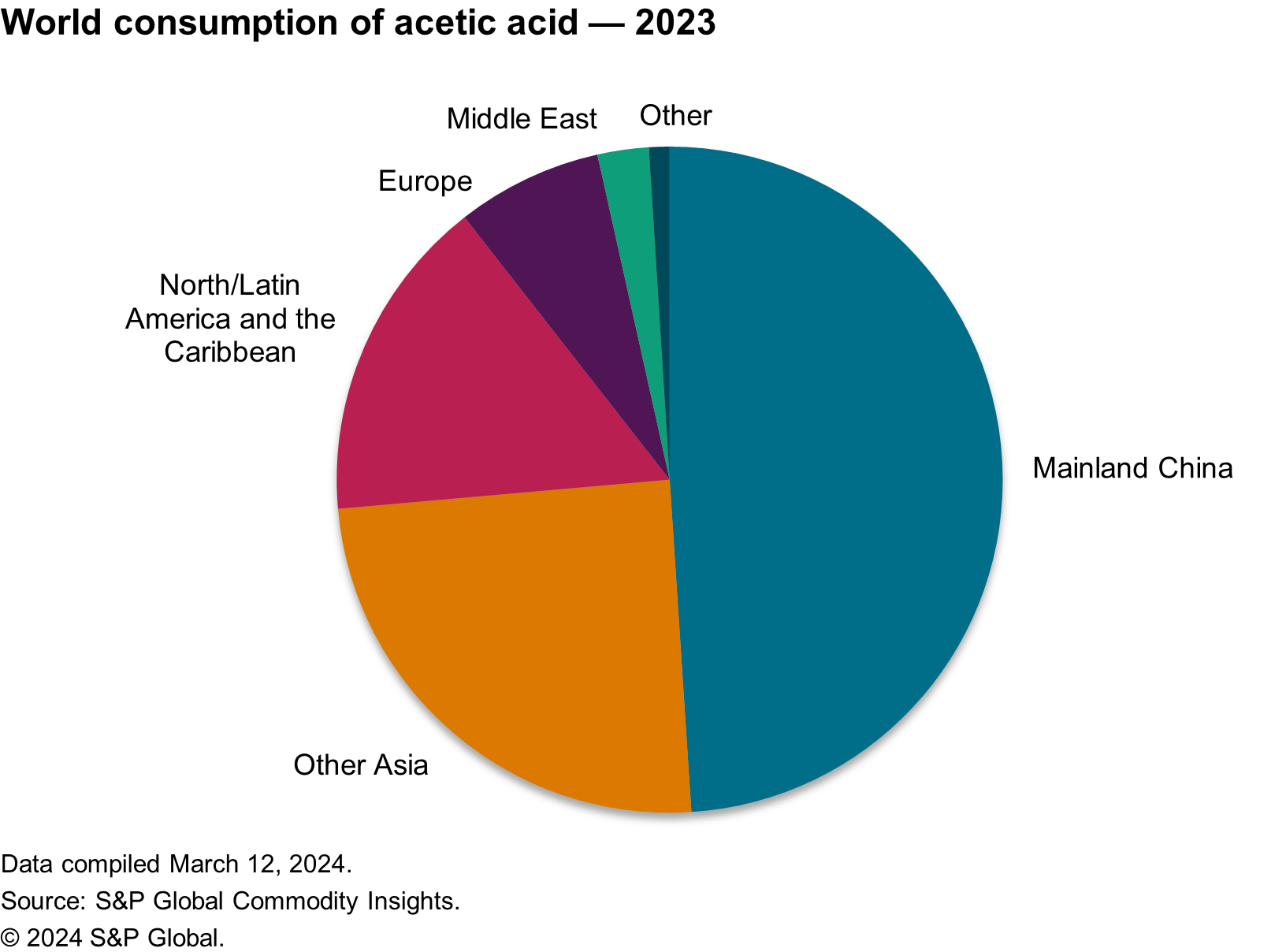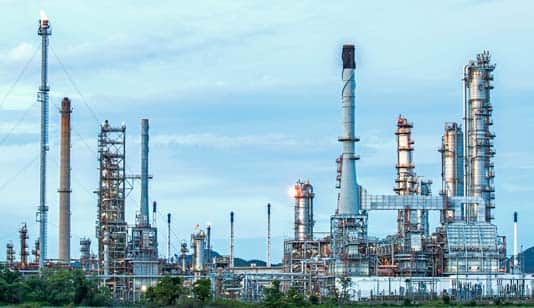Published October 2024
Acetic acid is a commodity chemical produced primarily by the carbonylation of methanol. Mainland China accounts for nearly 60% of world capacity, followed distantly by the United States. Mainland China dominates production because of its vast coal-derived methanol production, which is the primary raw material for acetic acid. Vinyl acetate monomer (VAM) is the largest end use for acetic acid, followed by purified terephthalic acid (PTA), ethyl acetate and acetic anhydride. Other uses include monochloroacetic acid, butyl acetates and ethanol.
The following chart shows world consumption of acetic acid:

In 2023–28, global consumption of acetic acid is forecast to grow strongly, driven primarily by mainland China. As demand growth is expected to outpace new capacity, average industry operating rates are expected to increase during the forecast period. New capacity is expected to be commissioned primarily in Northeast Asia, North America and the Indian Subcontinent.
For more detailed information, see the table of contents, shown below.
S&P Global’s Chemical Economics Handbook – Acetic Acid is the comprehensive and trusted guide for anyone seeking information on this industry. This latest report details global and regional information, including

Key benefits
S&P Global’s Chemical Economics Handbook – Acetic Acid has been compiled using primary interviews with key suppliers and organizations, and leading representatives from the industry in combination with S&P Global’s unparalleled access to upstream and downstream market intelligence and expert insights into industry dynamics, trade and economics.
This report can help you
- Identify trends and driving forces influencing chemical markets
- Forecast and plan for future demand
- Understand the impact of competing materials
- Identify and evaluate potential customers and competitors
- Evaluate producers
- Track changing prices and trade movements
- Analyze the impact of feedstocks, regulations and other factors on chemical profitability
























